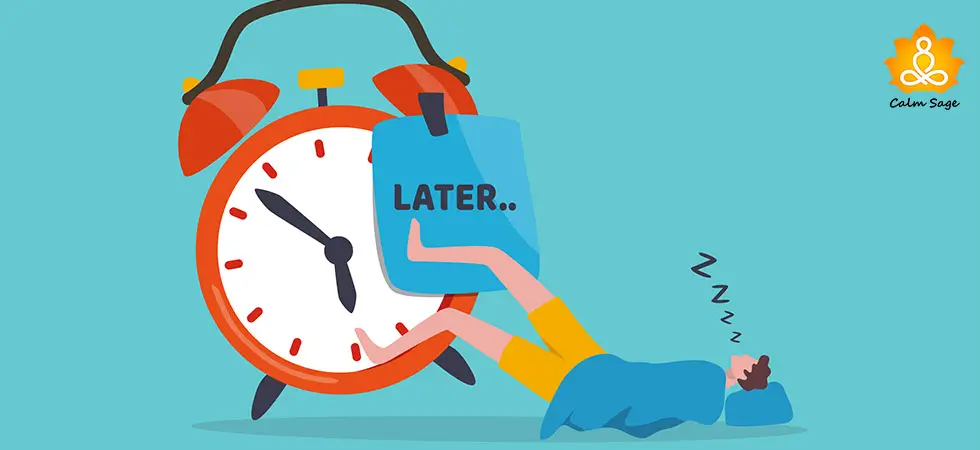How to Identify Your Emotional Triggers [With Tips to Cope With Them]

Every day we experience a slew of emotions – from excitement to nervousness and from anger to happiness. Oftentimes, these emotions are responses to certain situations and events such as getting a job interview, getting a promotion, having an argument with your partner, or spending time with friends.
How you respond to these situations can depend on your mindset and the context of those situations. It could be during these situations where your emotions are heightened that you could be triggered.
Emotional triggers are anything such as memories, people, and even experiences that can cause you to have an intense emotional reaction. Emotional triggers are often associated with post-traumatic stress disorder or other trauma responses.
In any case, emotional triggers can make you suddenly feel off-kilter, anxious, guilt-ridden, or ashamed. Learning to identify them can help you find the best way to cope with emotional triggers. In this article, let’s see how you can learn to do that and heal from emotional triggers.
What Are Emotional Triggers?
We all have triggers. For some people, these triggers are formed during childhood, especially if they’ve experienced some kind of trauma. When the pain and trauma are left unacknowledged, it could eventually become a trigger in adulthood.
So when you, as an adult, face similar events that you experienced as a child, you become triggered and all the painful memories and moments become more prominent. To deal with the triggers, we turn to unhealthy and sometimes addictive behaviors.
Here are some common emotional trigger examples;
- Being rejected by a loved one
- Being abandoned by a loved one
- Being ignored (either purposefully or unintentionally)
- Having emotionally unavailable loved ones (especially parents/primary caregivers)
- Being wrongfully blamed for something
- Being sexually harassed
- Being manipulated
How to Identify Your Emotional Triggers?
Anyone can have emotional triggers but they might look different in each individual. For some, it could be unwanted memories of a traumatic event and for others, it could be certain topics or behaviors.
Some common events that might trigger an emotional response could include;
- Rejection
- Betrayal
- Loss of control
- Insecurity
- Loss of independence, and more…
Here are some ways you can learn to identify emotional triggers;
1. Pay Attention To Yourself
One of the important steps in identifying emotional triggers is to pay attention to yourself. What drove you to have this intense response? Other than intense emotions, you may also experience physical symptoms such as rapid heartbeat, upset stomach, dizziness, excessive sweating, and more.
2. Step Away From It All
Then, once you’ve identified the symptoms, you need to stop and think about your response. What happened and what response was activated? Here’s an example; you spend all your day cleaning the house and organizing everything but when your partner comes home, they don’t acknowledge your hard work. This could make you feel angry and frustrated, right? Here, take note of the situation that triggered your response.
3. Find The Source
Once that’s done, think about the feelings and trace them back to their source. Why does this simple thing trigger a strong emotional response? Is there a reason for it? Maybe this indifferent response from your partner takes you back to your teenage years when your parents or friends failed to acknowledge your work.
4. Explore Your Emotions
If you can find a source for your emotional response, then make sure you keep digging. Get curious and explore your emotions some more. Don’t avoid them if they come up, instead take a stroll down your memory lane and see what may have triggered this emotional reaction. Are there any patterns you can trace? Explore!
Coping With Emotional Triggers…
1. Say OK To Emotions
The first thing you need to know is that it’s OK to feel whatever it is you’re feeling. If you’re sad, angry, frustrated, irritated… it’s OK. Acknowledgment is the first step if you want to learn how to heal from emotional triggers. If a situation comes up that triggers a strong emotional response, then pause and acknowledge that. Remind yourself that while the response might be similar, the situation has changed.
2. Take A Break
When you’re emotionally overwhelmed, taking a physical break can be great for you. If you can remove yourself from the situation that triggered your emotional response, then excuse yourself and take a break.
This might stop you from responding in a way that’ll make you regret it later. You can try some quick grounding exercises or breathing techniques to calm yourself down. This is a practice that’ll help you cool down and respond properly instead of reacting.
3. Consider Other Perspectives
There are people in your life who don’t want to see you hurt but they might not know what to avoid and might unintentionally make you feel triggered. If your loved one’s words or actions hurt you enough to elicit a strong emotional response, then take a breath, and consider a different perspective. Maybe your partner was lost in their thoughts and that’s why they failed to notice the work you did.
4. Communicate Your Feelings
Again, if your loved one’s actions or words hurt you, then talk about it instead of bottling your thoughts and feelings. Calm yourself down, take a breath, and then talk about your feelings. It’s also suggested that you use “I Statements” to communicate instead of yelling or demanding.
5. Try Mindfulness
In the long term, you can learn to calm your emotional response by practicing mindfulness. Mindfulness can help you become more aware of your emotions and feelings and bring you to the present moment. This practice can also help you be more in tune with your emotions so the next time when something triggers you emotionally, you’re in control of your responses.
6. Try Journaling
Learning to regularly track your emotions can also help you figure out the patterns of your emotional triggers. Journaling is a great practice to learn what triggers you, situations that make you feel anxious or vulnerable, and when you need to calm down. So, the next time you feel emotionally triggered, journal your emotions. You’ll be prepared in the future.
7. Seek Professional Support
Not many people can easily learn to regulate their emotions (myself included). Sometimes the emotional triggers are more noticeable but other times, they are more subtle and not easily identifiable. When you feel unable to control your emotional response on your own, you can reach out for professional support. Therapy can offer a safe and non-judgmental space to explore your emotions and overcome emotional triggers.
Wrap-Up
When you know your emotional triggers and how to deal with them, it can make a great difference in your emotional and mental health. Knowing how emotional triggers are making you feel can also help you work on your relationships.
We all experience situations that can cause us to respond strongly, but when you know your emotional triggers, it can become easier to navigate through them without hurting yourself or your loved ones.
If you can relate to the emotional triggers I’ve listed in this article, then let me know how you feel about them in the comments below. You may realize that it’s not easy to let go of past pain and believe that ignoring it all can help, but it’s not true.
You need to acknowledge your emotions, talk about them, and if nothing else seems to work, then know that it’s OK to reach out for professional help.
I hope this article helped you learn how to identify and deal with emotional triggers. For more, you can write to us at info@calmsage.com or DM us on social media. We’re here for you!
Take Care!




















